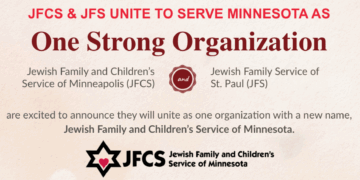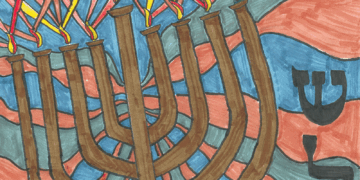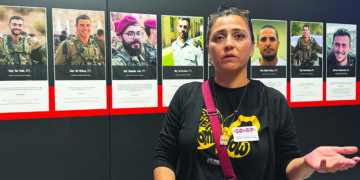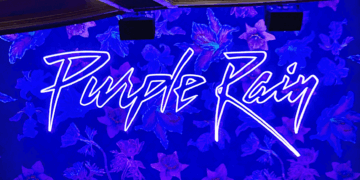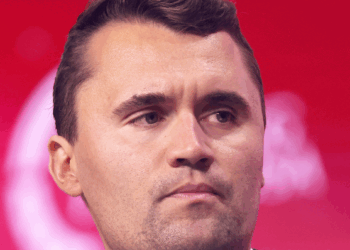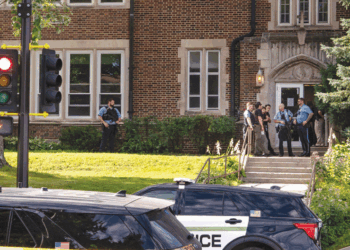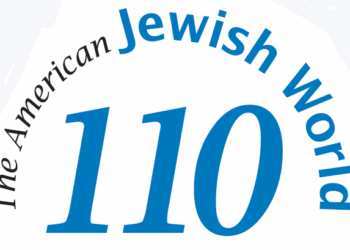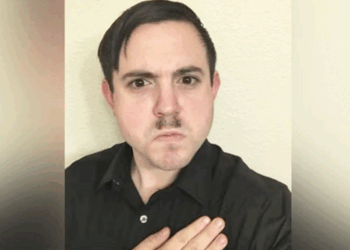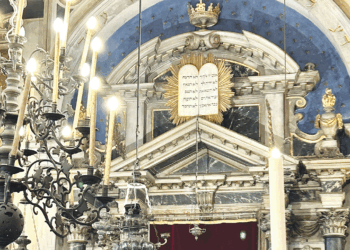High Holidays shul-goers will hear the powerful Unetane Tokef (“We shall ascribe holiness to this day”), a liturgical poem chanted before the Kedusha prayer. Unetane Tokef is part of the Rosh Hashana and Yom Kippur liturgies.
“Although there are popular legends concerning the origin of this piyyut (liturgical poem), we do not know who wrote it,” wrote rabbi and scholar Reuven Hammer, in Entering the High Holy Days: A Complete Guide to the History, Prayers, and Themes. “What is certain is that the poet was extremely gifted. The structure of the poem and its language suggest that it was composed during the Byzantine period.”
The poetry has riveted the attention of Jewish worshippers, especially at dire times that coincided with the High Holidays, such as the 9/11 attacks. From Unetane Tokef:
On Rosh Hashana it is inscribed,
And on Yom Kippur it is sealed.
How many shall pass away and how many shall be born,
Who shall live and who shall die,
Who shall reach the end of his days and who shall not,
Who shall perish by water and who by fire,
Who by sword and who by wild beast,
Who by famine and who by thirst…
Dr. Rabbi Hammer adds: “Many consider this poem to be the pinnacle of the Rosh Hashana liturgy. The poet has painted a picture of the most solemn day of the year, which to him is Rosh Hashana, not Yom Kippur. All other concepts associated with the day have been stripped away. ‘Awesome and terrible’ are the only fitting words to describe it.”
Another climactic moment in the High Holidays services is the sounding of the shofar. In an essay posted on the Reform movement’s website (reformjudaism.org), Rabbi Richard Sarason points out that the shofar liturgy concerns our efforts “to get God’s attention (the repeated shofar blasts) and to draw down God’s providential favor. By (literally) reminding God of God’s own words of promise — that in past times of dire need, God remembered our ancestors and saved them; that the shofar was blown both in times of trouble to summon God and in times of rejoicing; that at the end of days God’s sovereignty will be acknowledged by all humanity — that is, by invoking these words of Scripture, we release their power and help to bring about their fulfillment by “moving” God to act on our behalf. This surely is the primal meaning of the rite — but generations of commentators have seen less theurgic (or magical) meanings in this activity: the shofar blasts call us to accounting and repentance, reminding us of our duties to God and our fellow humans. Their impact is on us rather than on God.”
My former boss, the late Rabbi Marc Liebhaber, chided me on occasion for writing editorials that he characterized as too “Toraitic” or “rabbinic.” This from a rabbi. So, I will turn from further exegesis of the High Holidays liturgy to the mess in the United States and around the world.
In our current dispiriting political situation, I think the shofar should call us to recognize the growing threat to our democracy from the so-called alt-right, i.e., the cohort of white supremacists, militia members, anti-Semites, Ku Klux Klan members and neo-Nazis that have been emboldened in the Trump moment.
Just more than a year ago, the largest gathering of right-wing extremists, many of them carrying firearms and other weapons, marched in Charlottesville, Virginia. The so-called Unite the Right rally culminated in a neo-Nazi driving his car into a crowd of anti-racist protesters, killing one of them, 32-year-old Heather Heyer. The car’s driver, James Alex Fields Jr., 19, was charged with second-degree murder and other counts; he will go on trial Nov. 26.
In my editorial for the Rosh Hashana special edition last year, I wrote about the carnage in Charlottesville; but the threat from violent right-wing extremists has not abated, and the shofar must be sounded again, so to speak.
As I wrote last year, the white supremacists and neo-Nazis paraded through Charlottesville chanting “Jews will not replace us” and “Blood and Soil!” The latter slogan was popular during the Third Reich era. And some readers might recall that Congregation Beth Israel, Charlottesville’s lone synagogue, received word that the Jew haters of Unite the Right would try to burn down the shul. In the face of this threat, the leaders of the congregation moved the Torahs, including one that survived the Holocaust, to a member’s home for safekeeping.
Jewish World readers also might remember that President Trump was not able to utter an unequivocal denunciation of the racists and anti-Semites that gathered in Charlottesville; in one press encounter, he declared that there were “very fine people” on both sides of the confrontation.
Finally, I will mention that an exposé of the right-wing extremist scene, a globalized phenomenon, has been provided by the British group Hope Not Hate. They recruited a Patrik Hermansson, a 26-year-old graduate student from Sweden, to ingratiate himself with leading far-right individuals in the United Kingdom. Hermansson found that these racist, anti-Semitic and misogynistic folks admired Swedish culture, the “Nordic” heritage, and were happy to introduce him to their unsavory colleagues.
Hermansson later traveled to the U.S. for right-wing confabs and ended up in the midst of the mayhem in Charlottesville.
Jesse Singal wrote about Hermansson exploits, undertaken at great personal risk, in an op-ed for the New York Times last year. He pointed out that new recruits for right-wing extremism are “teenage and 20-something men (they’re mostly men)… These young men are being radicalized largely through the work of a popular group of new far-right internet personalities whose videos, blog posts and tweets have been consistently nudging the boundaries of acceptable conversation to the right — one of the explicit goals of racist extremists everywhere.
“And while ‘globalist’ may be one of the alt-right’s favorite slurs, Hope Not Hate conclusively shows that the alt-right is itself now a global movement with regular interaction among far-right figures from Scotland to Sweden to Seattle.”
Again, these fascists in the U.S., and in Europe, are a dangerous and violent faction. For example, Blaze Bernstein, a gay, Jewish, 19-year-old sophomore at the University of Pennsylvania, was murdered in January of this year, while visiting his family in Lake Forest, Calif. His alleged killer, Samuel Woodward, has been identified as a member of the neo-Nazi cell known as the Atomwaffen Division. Members of this right-wing hate group reportedly have been involved in four other murders.
Unfortunately, we have a president who is beloved by American white supremacists and Jew-haters. And while the organized Jewish community in the U.S. has devoted much time and money to the campaign against BDS, the movement to boycott, divest from and sanction Israel, the right-wing extremist faction poses a clear and present danger to our community, and to other religious and racial minority communities.
In the coming Hebrew calendar year, it would be gratifying to see our Jewish defense agencies reorder their priorities to confront the threat from the racists and anti-Semites. In our current political situation, the analogy to the nascent Nazi movement in Germany is apt. It’s time to expose and stop these wannabe Hitlers.
The partners of Minnesota Jewish Media, LLC, and the editors and staff of the American Jewish World, wish all of our readers a friends a good and sweet New Year, Shana Tova u’Metuka.
— Mordecai Specktor
editor [at] ajwnews [dot] com
(American Jewish World, 9.7.18)

